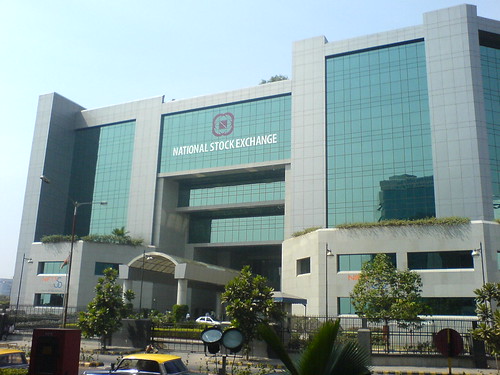Rajiv’s dad got hospitalised for sudden chest pain. Rajiv had a health insurance cover (popularly known as mediclaim) for Rs. 3,00,000 and admitted his dad to one of the best hospitals having cashless facility for treatment. At the time of settlement of bill for Rs. 2,00,000, he was surprised to know that the cashless claim was passed for only Rs. 1,40,000 and he need to pay the balance Rs. 60,000 before discharge. On inquiring with the insurance company, he came to know that as per his policy, his room eligibility was twin sharing occupancy of up to Rs. 1,500 per day whereas he had opted for single room having daily room rent of Rs. 2,500. Rs. 20,000 was rejected for this reason. Balance Rs. 40,000 was rejected on the basis of ‘co-pay’ condition of 20% in his insurance policy. Co-pay condition means that the customer needs to bear 20% of the hospitalisation bill and hence in this case, Rajiv have to bear Rs. 40,000 out of his total bill of Rs. 2,00,000.
Let us look at another example.
Sameer had purchased one of the cheapest health insurance policy available from a private company 3 years back. He was regular in paying his annual premiums and had no claims history. He was shocked to see that his 4th year premium was increased by 200% by way of ‘loading’.
Above two are not the examples of an insurance company cheating its customers. The clauses such as co-pay and loading are clearly specified in the terms and conditions of the policy documents given to the customer. However, Rajiv and Sameer were not made aware of the existence of such terms by their agent at the time of the purchase of health cover.
There is no denial of the fact that every individual should have health insurance cover due to the rising cost of medical treatment and the increasing risk of lifestyle diseases. However, one should evaluate all the features and conditions of a health cover to help him understand the insurance cover.
Courtesy: Олег Олешкевич from Picasa
Listed below are certain key features, besides the premium cost, one need to look into before purchasing a health cover:
- Pre-existing disease: If you have a history of disease at the time of taking policy, you need to check how it will be covered. There are certain policies which do not cover pre-existing diseases at all and there are few policies which covers such diseases after a period of 3 to 4 years. Needless to say, you should always prefer the second option.
- Room eligibility: Room eligibility means the daily maximum amount which the insurer will bear for room charges, boarding and nursing related expenses. Certain policies will link it to the sum insured (usually per day cap of 0.5% to 2% of sum insured, which may be too low), whereas some will specify the type of room eligible such as twin sharing or single along with a maximum cap for each type of room. You need to factor this while purchasing the cover and keep it in mind at the time of hospitalisation. In case you exceed these limits, the insurer deducts the additional expenses incurred above the limits specified. Do remember that doctor’s fees, operation theatre cost and many other costs are related to the room you occupy. All such cost will be settled based on your eligibility and any additional expenses will be bear by you.
- Pre & post hospitalisation cover: You need to check the number of day’s pre and post hospitalisation expenses you will be able to claim. Generally it is 30 days for pre-hospitalisation expenses and 60 days for post-hospitalisation expenses.
- Diseases cover: Certain diseases such as Hernia, Piles, Cataract, Osteoarthritis may be specifically excluded from the cover or may be covered after certain years of policy existence.
- Entry Age: Earlier it was difficult to cover people above 55 years of age under health cover. This was rather disgusting since that is the period of life when the health problem starts arising. But now, there are many policies available where one can enter in to a health cover at age of 55 years or above. Do check with your insurance provider about the entry age limits.
- Renewal Option: This is one of the important things to check and it basically means the age till when you can renew your insurance policy. Certain companies restrict it to 70 years whereas few provide till 90 years. Definitely, more the better.
- Co-pay: Co-pay clause reduces your premium outgo, however by choosing this option; you agree to share your hospitalization bill with the insurance company. Co-pay can range from 5% to 20%. In 20%, you agree to bear 20% of the total hospitalisation bill, whereas the insurance company bears the balance. Co-pay usually is not wrong, but you should be aware about it at the time of purchasing the policy and should be reflected through reduce premium outgo.
- No claim discount and loading: Generally the insurer provides 5% discount on premium (subject to overall limit) for each claim free year. Hence having no claim during a year may reduce your annual premium outgo. As a contrary to this, if any claim is admitted during the year, then a loading of 5% or more (depending on the terms) shall be levied on your next annual premium. In simplest terms, you benefit with reduce premium in case there is no claim during a year or you need to pay increase premium for subsequent year in case of any claim. However the catch is the benefit of reduce premium is generally restricted (upto 20%) whereas there is no restriction for loading percentage. There are few policies where loading can be up to 200% to 300% of the premium amount. Hence it is necessary to clarify loading terms before finalizing a health cover. There are few companies which do not specify the terms and state that it is based on their scientific model. However, it is better to have it specified upfront in the policy document. Certain private companies have started selling policies without any loading conditions.
- List of Network Hospitals: You need to check the list of network hospitals covered by the insurance company. This will be helpful since you can avail the facility of cashless hospitalization in these hospitals. Few insurance providers requires you to co-pay certain portion of the bill in case the treatment is availed in non-network hospitals.
- Maternity Benefits: Do check whether maternity expenses are covered and its limits.
- Critical illness cover: There are certain policies which cover only critical illness such as cancer, brain tumor, etc. While these diseases will also be cover in your normal policy, the cost of such treatment may be substantially higher and may exceed your sum insured. Critical illness policies helps in such case wherein they cover only specified critical illness. Since there coverage is specific, if taken at early age, premium outgo is less.
- Other benefits such as ambulance cost, attendance charges: Policy may cover ambulance cost and attendant charges upto certain limits. It is advisable to know them.
- Claim process (TPA or direct): You need to check how the claim settlement will take place. Whether will it be through Third Party Administrators (known as TPA) or directly by the insurance company? Generally, in case it is by the insurance company, the company should pass the benefit of cost savings by way of reduce premiums. TPAs are incentivized to deduct the hospitalization bill and try to reduce the claim amount as much as possible. Hence it is important to know the TPA for the insurance provider and check its claim settlement history.
One can opt for family floater policy instead of regular policy, where the sum insured is floating over the persons insured. With the family floater option, you can additionally cover your spouse, parents or children to the same annual aggregate limit. Since the probability of all of you getting hospitalised is negligible, it reduces the premium outgo without affecting the insurance cover.
Another thing to keep in mind is that it is necessary to have a health cover even though you are cover under your employer’s group mediclaim policy. This is generally allowed as perk to the employees. However, the employer has an option to withdraw the same or reduce the cover or in case you discontinue your job, you may be without a health cover and the new cover may come at a higher premium.
There are health cover plans available which gives cash benefits for each day of hospitalisation or which are insurances plus investment plans. However, as in term insurance, it is beneficial to keep the health insurance cover simple to cover the basic risk of hospitalisation expenses.
Were you aware about these features while purchasing your health cover? Did you face any problems at the time of claim settlement? Do share the same along with your comments and suggestions below.




